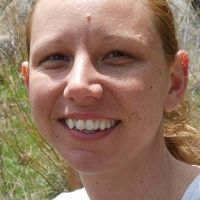Woodward & Johnson, 2011
Determination of Nutrient Laden Interflow Contributing to Hot Spots/Moments in the Soil on a Small Scale
Woodward, C., Johnson, D. W. (2011)
Fall meeting, American Geophysical Union, December 2010. Abstract EP42A-06.
-
Sierra, GRAD STUDENT
-
Sierra, INVESTIGATOR
Abstract
Nutrient hot spots/moments present in the soil matrix are a new field of research and much is unknown of their formation, period of existence, and how they affect the surrounding environment. It is believed that they play a pertinent role in the biogeochemical cycling of nutrients and may contribute to nutrient loading in streams. The purpose of this study is to understand spatial variability in nutrients on a small scale and to investigate the magnitude and temporal frequency of nutrient hot spots/moments. To test this hypothesis, small grids were set up in the Critical Zone Observatory (CZO) research station, King’s River Watershed, California. The grids were 4x4m in size and were composed of cation/anion UniBest® resin capsules, and Western Ag Innovations PRStm-Probes. The capsules and probes were placed in sets of four 8cm apart in the grid. After the first storm of the season two of each sampler was removed. The final sets of samples were left in for the entire precipitation season. Statistical analysis was preformed to extrapolate if trends can be deciphered between the spatial (8cm) and temporal (first precipitation vs. whole season). T-tests show significant differences, [between 0.004 (NO3-N) and 1.4x10-13 (Mg)] among the temporal with NH4-N, NO3-N, Ca, Mg K, P, Fe, Mn, Zn and S. With some nutrients there were positive statistical outliers after the first precipitation event and others appeared after the whole season. This may be because of spatial variability and/or the formation of hot moments versus hot spots within the soil.
Citation
Woodward, C., Johnson, D. W. (2011): Determination of Nutrient Laden Interflow Contributing to Hot Spots/Moments in the Soil on a Small Scale. Fall meeting, American Geophysical Union, December 2010. Abstract EP42A-06..
Explore Further


